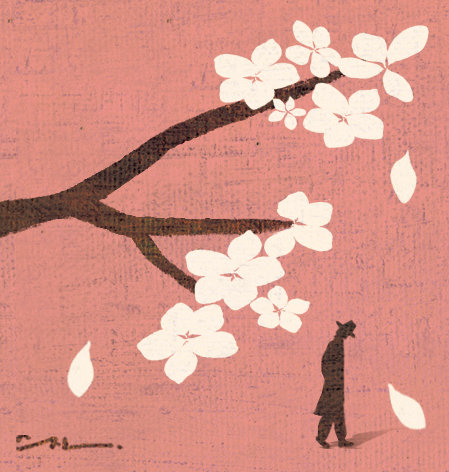Spring of the times
Spring of the times
Posted April. 19, 2019 07:47,
Updated April. 19, 2019 07:47

A cherry blossom festival is held in New York City every April. Some 600 cherry blossom trees lined on Roosevelt Island, situated east side of Manhattan, bloom just like the cherry trees adorned on the streets of Seoul’s Yeouido. The pink cherry blossoms fluttering in the breeze on the East River against the skyscrapers of Manhattan is a sight to behold and can be only enjoyed in the spring. Some 30,000 New Yorkers, weary of the long winter and eager to enjoy spring, gathered at the cherry blossom festival, which started on Saturday.
This year’s festival is particularly special because the cherry blossoms are associated with love for humanity and a tragic history. The festival first started in 2011, when the Great East Japan Earthquake took place. The American people did not turn a blind eye to the Japanese people who lost their houses and families to the earthquake and tsunami. The Japanese community in the U.S. started the cherry blossom festival, which celebrates its ninth year, to raise funds.
The Franklin D. Roosevelt Four Freedoms Park, created in memorial of the revered President Franklin Roosevelt, can be found near the cherry blossom lanes of the East River. The park is named after the former president’s Four Freedoms speech -- freedom of speech, freedom of worship, freedom from want, and freedom from fear, which presented four fundamental freedoms that people "everywhere in the world" ought to enjoy.
Visitors to the park found a very special artwork project: "Freedom from Fear/Yellow Bowl Project" by American ceramic artist and journalist Setsuko Winchester. One hundred twenty hand-made ceramic yellow bowls, about the size of a hand palm, were placed on a rail near the sculpture of President Roosevelt. Each bowl represents some 120,000 Japanese-Americans, who had been detailed in 10 facilities in the U.S. after the Japanese army’s attack on Pearl Harbor in 1941.
One year after Roosevelt’s Four Freedom speech on Feb. 19, 1942, the U.S. government decided to detain 120,000 Japanese-Americans through an administrative order. Two thirds were adults and a third were children. They were detained for having Japanese ancestry. The Japanese-American ceramicist wrote that “these people, who were mostly U.S. citizens, were excluded from the four freedoms written in the nearby wall.” The project was removed after the festival, but the historical awareness of the U.S., which does not shy away from its past faults, will be remembered by many.
The 120,000 Japanese Americans suffered 77 years ago due to Japanese militarism and U.S. discrimination. The agony they suffered would not be different from the pain borne by some 30 million Koreans who were excluded from the four freedoms for 35 years under Japanese colonial rule. The politicians of Korea, the U.S. and Japan should visit Roosevelt Island in April, before the cherry blossoms go away.
Yong Park parky@donga.com







